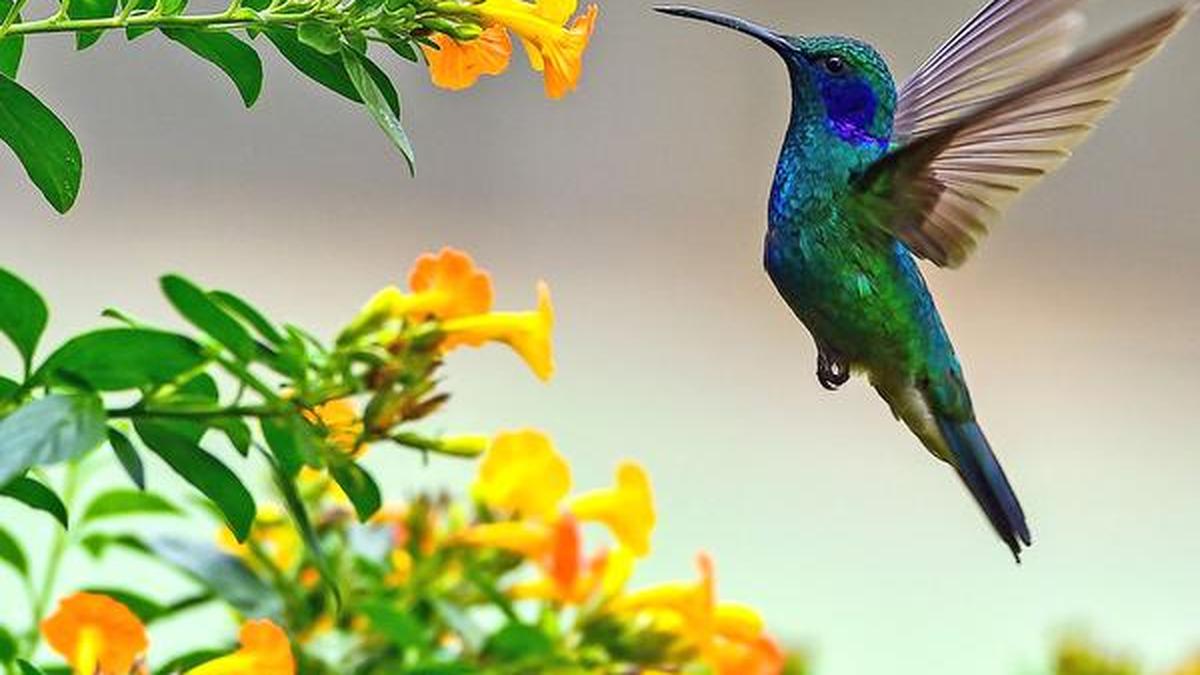A hummingbird feeds on the nectar of a flower in Boquete, Chiriqui Province, Panama, 2020. Hummingbirds are known for their ability to hover mi-air by rapidly flapping their wings 15 to 80 times per second, depending on the bird’s size.
| Photo Credit: AFP
For decades, scientists and engineers have puzzled over how insects and hummingbirds can hover, i.e. stay nearly motionless in air, despite the limits of ordinary aerodynamics. Conventional theory long held that such flight should be unstable: the lifting forces needed to balance the being’s weight should be too great to sustain without active control.
Many studies have tried to model hovering mathematically, treating it as a complex system with flapping wings, nonlinear motions, and multiple interacting forces. Other researchers ran detailed simulations of fluid motion. They proved accurate — but they operated far too slowly to explain how real creatures stabilise themselves in milliseconds.
Meanwhile, experiments also showed that insects depend heavily on sensory feedback such as visual cues, airflow sensors, and balance organs to correct their motion, which added to the puzzle because insects have small brains with very limited computing power.
These conflicting lines of evidence have together left hovering an unsolved puzzle. But if a study published recently in Physical Review E is to be believed, science may have finally cracked the puzzle. The authors of this study, from the University of Cincinnati in the US, have revealed that there’s a way hovering can be governed by a simple, real-time feedback rule that needs no heavy computation at all.
They have proposed that hovering operates as an extremum-seeking (ES) feedback system. Imagine you’re trying to keep a drone perfectly hovering at one height but you don’t know the exact rules that tell you how to do it. You can’t write equations or predict the forces. Instead you use trial and error with feedback: you make small adjustments, watch what happens, and keep changing direction until the drone stays steady.
This is what an ES system does. It’s a feedback loop that helps a system find its sweet spot, a.k.a. the extremum, which could be a minimum or maximum of something you’re trying to adjust.
It starts by making small yet regular changes to some control input, e.g. an insect slightly changing the strength or angle of its wing flaps. The insect’s body or sensors detect whether it went up, down or stayed level. If the change improves its stability, it keeps moving that way; if it doesn’t, it reverses course. Through such small corrections, the insect eventually learns the right flapping pattern to stay balanced.
Their simulations showed that the ES-based control system reproduced stable hovering in hawkmoths, craneflies, bumblebees, dragonflies, hoverflies, and hummingbirds. Each model could maintain constant altitude without requiring detailed aerodynamic models. The same feedback rule also worked despite vast differences in size and wingbeat frequency as well. And the predicted flapping amplitudes closely matched values measured in natural experiments.
By showing that hovering can emerge from a simple law, the study suggested that stability in hovering flight needn’t demand complex neural abilities. For biologists, per the study, the findings can help clarify how small flyers remain steady with minimal processing power; in engineering, it could open a path towards bio-inspired drones that hover stably without complex control algorithms or heavy sensors.
Published – October 26, 2025 03:25 pm IST
